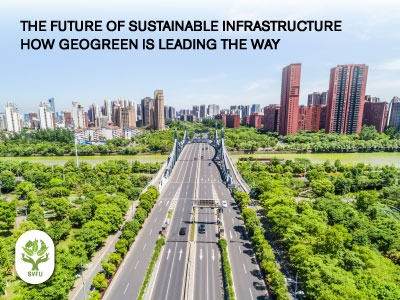Erosion Control Naturally: The Role of Coconut Fiber in Soil Protection
- Dr. Manali Date.
- Jul 1
- 2 min read
Updated: Jul 15
Coir has existed since the nineteenth century. In reality, the word "Kera" implies a coconut tree in Malayalam. This land of coconuts is responsible for India's thriving coir industry. The coir industry has grown since then, and it now contributes significantly to revenue and business in Karnataka, Tamil Nadu, and other nearby states. Alleppey had India's first coir factory. James Darrah changed the modest local coir sector, bringing it to new heights of profitability and organization.
It is critical to use sustainable and nature-based infrastructure solutions instead of conventional materials in all feasible situations. One such resource overlooked by most infrastructural and industrial sectors is the establishment of green cover and ecological balance through the protection of bare slopes, which eventually erode and become unstable. Slopes slide due to either a lack of vegetative cover or slope instability.
Coconut fiber erosion control!!
How coconut fiber prevents soil erosion
Many previous studies have shown that in a substantial number of cases, the erosion of such overcrowded dump slopes is caused by an imbalance in the internal moisture level of dump particles. When the moisture level is too high, the waste particles begin to fall on their own after reaching a particular height. They serve as a low-impact road construction technology as well as a climate-resilient engineering technique.
Coir erosion control mat and natural erosion control methods
Coir geotextiles are the most appropriate material in such instances. It's one of the most promising eco-engineering trends for 2025. It is biodegradable and requires no upkeep.
It promotes the development of plants.
Its installation process is quick and compact. The coir erosion control blanket outperformed other traditional erosion control technologies. These are utilized in numerous roads, railways, and other projects to protect slopes and control erosion.
They are a low-impact road construction tool and a climate-resilient engineering practice.
The use of coir in natural erosion control methods is cost-effective and self-sufficient.
Biodegradable erosion prevention materials
The above images show the use of coir geotextiles in slope protection and soil erosion control. It is a unique bioengineered, geo-composite product made from non-woven natural fibers and woven synthetic lattice encompassing all functions of geotextile to meet the challenges of surface soil erosion. It is boned mechanically and reinforced with closely woven, very fine nets made from varying materials.
Applications of Coir geotextile, green solutions for soil stabilization
Hill slopes
Railway and road slopes
Urban Landfill
Lake Rejuvenation
Beautification of Tourist Areas
Golf Course
Airports
Educational Institutes and commercial hubs
Factories
Lakes and Rivers restoration work
Natural fiber geotextile for erosion control
The use of a coir blanket on the subgrade of unpaved rural roads to improve the road's strength and durability has also been successfully tested. These unorthodox uses for coir are extremely important in today's world, as man is looking for every possible choice for environmental protection.
The use of coir and its products in a variety of applications will benefit not only the economy but will also allow for long-term development. Coir is a biodegradable substance; thus, its use is environmentally benign. The extraction of coir fibers and subsequent processing into various products is a very successful step toward reducing the environmental impact of human consumption and returning as much beauty and assets to nature as possible. However, more work needs to be done in this area. For this reason, residents must be made aware of the current state of the coir business and how its growth will propel our country toward a powerful, sustainable, revenue-generating mechanism.











Comments